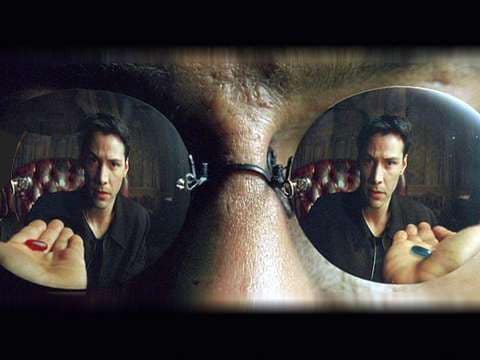One of my favorite movies is The Matrix. There is one scene that really jumps out to me. When Morpheous and Neo first meet. Morpheus shows Neo two pills: a blue and a red one. If Neo chooses the blue pill, he will wake up in his bed and forget about everything that happened to him up to that point. He will blissfully continue on in the matrix free of any awareness that his life and everyone’s life is but an illusion. If he takes the red one he will see “how far the rabbit whole goes.” Remember?

We are at that point, I suggest with Evidential Breath Testing for Blood Alcohol Content in the United States.
I have blogged here before about the scientific farce that is Evidential Breath Testing as practiced today in the United States:
Can someone honestly answer why there is still Breath testing for EtOH in America?
Breath testing theory for ETOH is wrong and unscientific
Why do instruments need to be calibrated?
Now, I would like to build on our previous posts, and hope that you are willing to take the red pill with me here to see that the idea that Evidential Breath Test machines are regularly calibrated in a true scientific sense.
First, some definitions:
- Calibration is the imperfect act of testing
- as series of known and adjudicated materials (Certified Reference Materials traceable to NIST, Sigma Aldridge or acceptably made up from USP grade materials) at different concentrations (hopefully more than once) which are assumed to be true values within some proven and expressed Uncertainty Measurement
- in your device under the exact environmental and instrumentation conditions that you will be testing the unknowns, and
- determining whether or not the resulting data points fit along a line as evaluated by some measure such as Ordinary Least Squares, regression analysis or even better r2adj or Weighted Least Squares with a Lack-Of-Fit examination with p values expressed.
- We accept this as being the TRUE VALUE if criteria is met and examine unknowns correlating the response to the calibration curve to arrive at a result.
- PROPER SCIENTIFIC CALIBRATION REQUIRES RE-EXAMINING OVER TIME THE MACHINE USING THE SAME SERIES OF TESTS BUT THEN ACTING ON THE DATA to try to eliminate or correct for bias and error in terms of precision. It is this “acting on the data” element that differentiates this from our next concept.
- Verification is the act of testing a known standard and comparing the response on the detector when it is tested to discover whether or not it is within an arbitrary “zone” of acceptable response from the previous calibration.
The data:
(You may want to watch this one on YouTube in full fcreen so you can see the detail and the legend that explains the data.)
- Assume the blue line and the blue data points are the machine’s initial act of calibration as defined above.
- Now suppose the red line is indicative of the lower and upper bounds of the arbitrary acceptance criteria (otherwise thought of as a “zone” of proper responses) in terms of the original blue line.
- Finally, suppose the green line and the green data points are the subsequent “calibration test” results as performed all across the United States.
Discussion of the data:
- It is clear that there is a difference between the y-intercept and the slope of the two lines (blue and green).
- They are different.
- But both meet the traditional r2=0.999 measure. It is clear that the green line and data points lie within the red line.
Significance of the data and our procedure:
If what we were performing to get the green line is a true calibrating act, then when we get the green data points and establish the green line and then from that point forward, we would use that data and the resultant green line as our presumed true values and evaluate all future data of the unknowns based upon that.
However, this is not what happens, as far as what I see from the data, with the green line event (the “calibration test”). There is no acting on the data.
Instead the green line is ignored. There is no adjustment made on these devices to correct for what we see above is the clear bias of the device.
Conclusion:
So, by definition the green line event is simply not a true scientific calibration, but rather a verification over the same data points.
Now my questions:
Where and when is the true calibration of these machines performed and by whom?
Stated differently where is the data actually examined and a true scientific calibration curve established?
Most importantly, how long ago was this done?
So, I suppose the answer is that once it leaves the manufacturer it never really and truly is calibrated (in the scientific sense) ever again. At most, it is verified.
When the government comes in and claims the machine “had just been calibrated” the day before (i.e., a “calibration test” was performed the day before) this is not true.
So I guess the secret is that there is no spoon. Is there?


